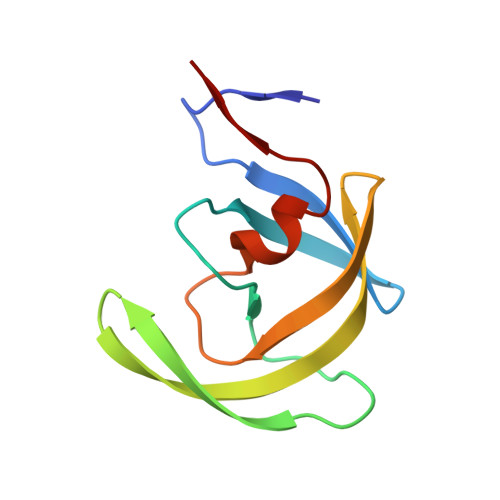Discovery and selection of TMC114, a next generation HIV-1 protease inhibitor
Surleraux, D.L.N.G., Tahri, A., Verschueren, W.G., Pille, G.M.E., de Kock, H.A., Jonckers, T.H.M., Peeters, A., De Meyer, S., Azijn, H., Pauwels, R., de Bethune, M.-P., King, N.M., Prabu-Jeyabalan, M., Schiffer, C.A., Wigerinck, P.B.T.P.(2005) J Med Chem 48: 1813-1822
- PubMed: 15771427
- DOI: https://doi.org/10.1021/jm049560p
- Primary Citation of Related Structures:
1T3R, 1T7I, 1T7J - PubMed Abstract:
The screening of known HIV-1 protease inhibitors against a panel of multi-drug-resistant viruses revealed the potent activity of TMC126 on drug-resistant mutants. In comparison to amprenavir, the improved affinity of TMC126 is largely the result of one extra hydrogen bond to the backbone of the protein in the P2 pocket. Modification of the substitution pattern on the phenylsulfonamide P2' substituent of TMC126 created an interesting SAR, with the close analogue TMC114 being found to have a similar antiviral activity against the mutant and the wild-type viruses. X-ray and thermodynamic studies on both wild-type and mutant enzymes showed an extremely high enthalpy driven affinity of TMC114 for HIV-1 protease. In vitro selection of mutants resistant to TMC114 starting from wild-type virus proved to be extremely difficult; this was not the case for other close analogues. Therefore, the extra H-bond to the backbone in the P2 pocket cannot be the only explanation for the interesting antiviral profile of TMC114. Absorption studies in animals indicated that TMC114 has pharmacokinetic properties comparable to currently approved HIV-1 protease inhibitors.
Organizational Affiliation:
Tibotec BVBA, Generaal de Wittelaan L 11B 3, B-2800 Mechelen, Belgium.

















